“A business case captures the business justification for initiating a task or project. It describes the benefits, the costs and impacts, plus a calculation of the finance case.” – Project Smart
No matter what field of business you work in, it’s likely that you’ll have heard of the term, 'a business case'. But how many of you have actually put one together?
As I was carrying out some research to help me with the creation of a case for one of my own clients, while I was able to find useful bits and bobs of information here and there, I struggled to find the fundamental steps of a business case summarised all in one place. Ultimately, what I was searching for was a handy resource that I could refer to each and every time I needed to pull one together.
So that’s what I’m here to try and do; whether you need to pitch in new business, bring in a new process, upsell or cross-sell, or even need to keep existing business, I’m going to draw on each and every step that will guide you all the way.
BEFORE YOU PUT PEN TO PAPER…
Before you start building your business case, you need to figure out what the case actually is, because creating it is actually the last of several stages.
Whether you’re making the case on your own or you’re creating it as part of a team, before you put pen to paper take time to plan through and make notes on each of the key stages that I’ll soon begin to detail.
Not only will doing this help your final product to be as thought out and concise as possible, it will also help you to evaluate whether the project is actually feasible. Because business case development can be very time consuming, it’s important to make this assessment as early in the process as possible.
STEP ONE – DON’T FORGET THE EXECUTIVE SUMMARY
As with any report, the most important thing to start with is an executive summary – unfortunately, despite the fact that a lot of blood, sweat and tears is likely to be going into its creation, remember that some decision makers may only read this section.
So don’t lose your audience before you’ve had a chance to begin; write this section last so you know the key points you need to draw upon and when you’re 100% clear on your recommended course of action, and why.
STEP TWO – STATE THE OBJECTIVE
This step shouldn’t need much introduction - after all, it’s the reason you’re creating the case in the first place.
All you need to be here is clear and concise, and importantly, to the point – a bullet point summary of what your case is trying to achieve will be more than plenty.
STEP THREE – DESCRIBE THE CURRENT SITUATION & LANDSCAPE
This section should describe the situation behind the problem in more detail and how the situation came about – painting the bigger picture is absolutely key here.
Aside from just drawing on the current situation of the main point of your business case (whether it be your client, a service, a process or a project), don’t forget to include it alongside an analysis of the wider market and key competitors.
Importantly, it should also provide insight into the potential outcomes if the current situation were to be left to continue - the conclusion of which should naturally lead to the next section…
STEP FOUR – TALK THROUGH YOUR PROPOSED SOLUTIONS – AND ABOVE ALL ELSE, BE PRAGMATIC
In a smooth transition from step three, step four should identify potential solutions to the problem and describe them in sufficient detail.
It’s likely that as you’ve been carrying out your research, you’ve discovered that there’s the possibility of multiple solutions to the problem that could help you to meet the desired objective. If this is the case, you should explore all solutions but provide a clear recommendation at the end of the section on which one you feel should be pursued.
As you’re doing this, there is one key thing to remember; while business cases and their solutions should be aspirational, they must be, above all else, achievable and realistic – if they’re not, you’ll run the risk of not delivering when it comes to actioning everything you worked so hard on pitching, causing deeper problems further down the line.
You are half way through my steps now, if you'd like to get your download started whilst you continue reading click on the button below:

STEP FIVE – OUTLINE THE COSTS
Before I started my research on business cases, if someone had asked me 'at what point should you address the issue of cost?', I would have instantly said at the very end because surely, that’s the bit that everyone is interested in?
But the more I think of it, while cost will almost always will be the key to gaining approval, the more it makes sense for it to be present in the middle as there are some vital steps that should come after it to really solidify and strengthen your case. Hopefully, as I go on to address these, you’ll see why too.
When you come to discuss price, make sure you include details of all costs that are likely to appear throughout the campaign, including any ongoing support costs – similarly to the above, the last thing you want to happen is get sign-off for your case to then have to approach your client/Managing Director/Chief Financial Officer further down the line to get sign off on some more budget for it.
Once again, the recipe for success with this section is to be clear and concise – to help us do this here at Zazzle, we use a resourcing sheet that breaks this information down task-by-task, month-by-month – an example of which is included for you below:
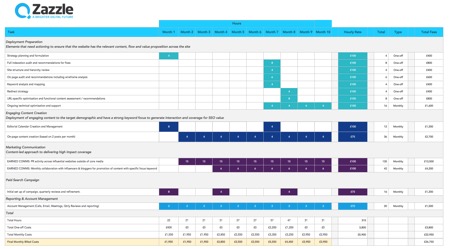
STEP SIX – FORECAST THE ROI
Once you’ve covered off the point of costs, the next logical step to address is the all-important matter of investment versus reward. As an agency, one of the most frequently asked questions we get asked whenever a client embarks on a new partnership, project or campaign with us is, "What return on investment am I going to get?".
Now, as I don’t know what your business case is for, I can’t dictate exactly what you should be forecasting, but to help provide some more context, from a digital marketing perspective, often the most common things we forecast internally are:
- a) Keyword Rankings
b) Organic Traffic
c) Revenue/Transactions via Organic Search
The best way to map these out are visually – again, to really get your point across in a clear and concise way.
To help you, I have included some examples of how we visually represent these below:
a) Keyword Rankings
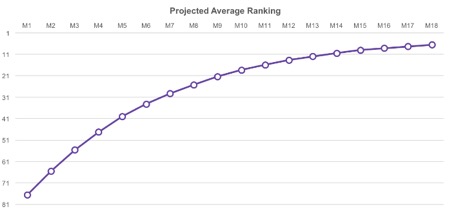 b) Organic Traffic
b) Organic Traffic
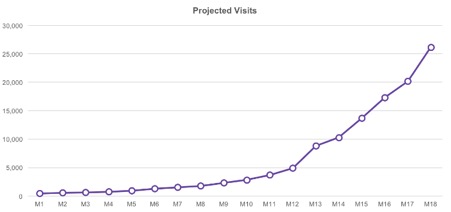
c) Transactions/Revenue
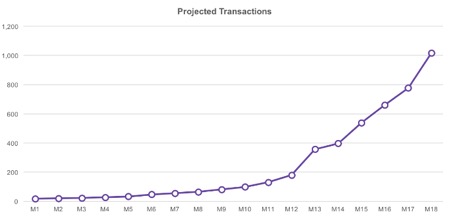
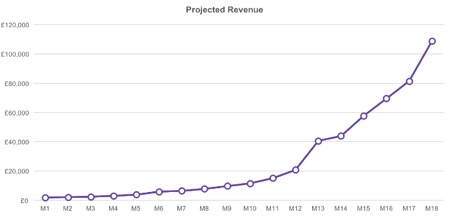
If you have separate elements such as those above, an important thing to do is include an ROI overview that takes all of these projections and maps them out into monetary terms – that way, the person/people that you're pitching to can see exactly how much they need to invest and how much they’ll get out of it accordingly:
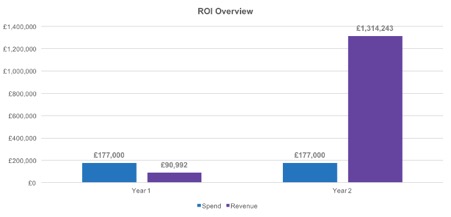
STEP SEVEN – BE CLEAR ON ANY ASSUMPTIONS, RISKS & DEPENDENCIES
Whenever I thought of a business case, I always thought of it as a one-sided document that would detail everything that needed to be done by those putting it together to achieve the desired objective.
But no matter what you're building your business case for, it is almost certain that there will be an element of input that you need from those you’re putting the case together for to help you get there – and if there is, don’t be afraid to stipulate these.
Key assumptions, risks and dependencies that should often lie in this section include:
a) Delivery/sign off times – If your project is time sensitive, as well as including details of the delivery timelines for the work that you’ll be doing, make sure you include clear dates for when you need delivery/sign-off from the other side too and make it crystal clear that the success of the project relies on these. If there are any problems with the stipulated timeframes, these should be raised well in advance of the project starting.
b) Development/technical changes/issues – If the meeting of the business case objectives is dependent on the making or fixing of any development or technical changes, then similarly to the above, clearly define these here.
Given the nature of our business, we often rely on a client’s site being fully fit for purpose before we can put any performance measures in place. Therefore, when drawing up KPIs, we will often clearly state that they are built on the assumption that all of our technical recommendations will be made before we start the campaign – if we know that this is impossible from the client’s side, we will make changes to the KPIs alongside these but also include this alongside the first assumption.
c) Google algorithms – This is a big one in the digital marketing world and something that should always be considered if your business case includes the use of online search – with Google changing and evolving on a daily basis, the one thing you can’t control is them and their algorithm changes. Because of this, I would advise including a caveat within your case to touch upon this.
STEP EIGHT – LAY OUT THE IMPLEMENTATION PLAN
The final section to include in your business case is the grand action plan – when do you plan to achieve everything by?
A Gantt chart is often the perfect way to do this – it allows you to break task delivery down by days, weeks and months and provides a great visual representation of the full process from start to finish.
If you can, try to overlay the objectives and ROI details onto this so that everything is encapsulated in one place – not only will it serve as a useful summary for those reading it,
it can also be used to help you keep track of the progress you're making alongside it and be a valuable resource in helping you to review the full success of your case when the time comes to evaluate it.
IF AT FIRST YOU DON’T SUCCEED…
While we all want to believe that every business case we go on to create will be successful, it’s a pure fact of life that you’ll win some and you’ll lose some.
If you lose some, don’t shy away from the fact that you did and sweep your pride under the carpet – work with those involved in the decision making process to identify the reasons why it was rejected. Was the cost component too expensive? Were the plans too ambitious? Was it felt that the business case was poorly written or presented? Does the timeframe not fit with the business’ plans?
Be proactive in seeking feedback and take each and every point on board to help you make the next business case you create even more amazing.
KEY TAKEAWAYS
As I mentioned at the start of this post, if you are like me and need a handy resource to refer to each and every time you need to pull one together, look no further; I’ve created one for us all, which you can download and use here.

Sign up for our monthly newsletter and follow us on social media for the latest news.
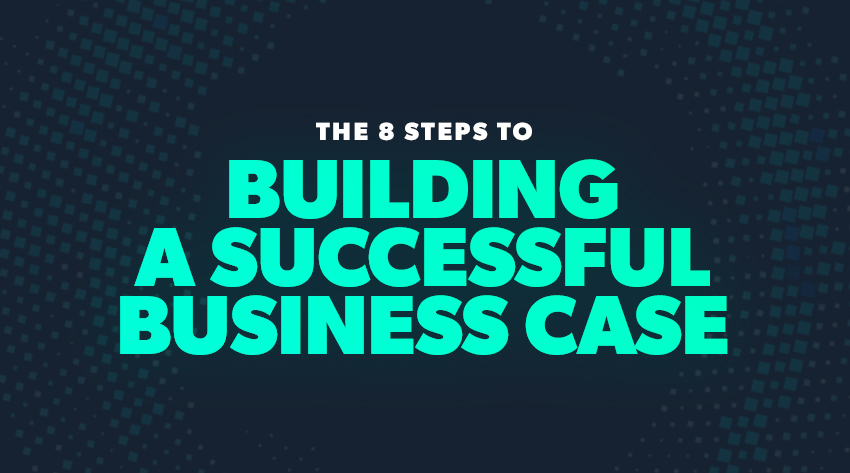




 Proudly part of IPG Mediabrands
Proudly part of IPG Mediabrands